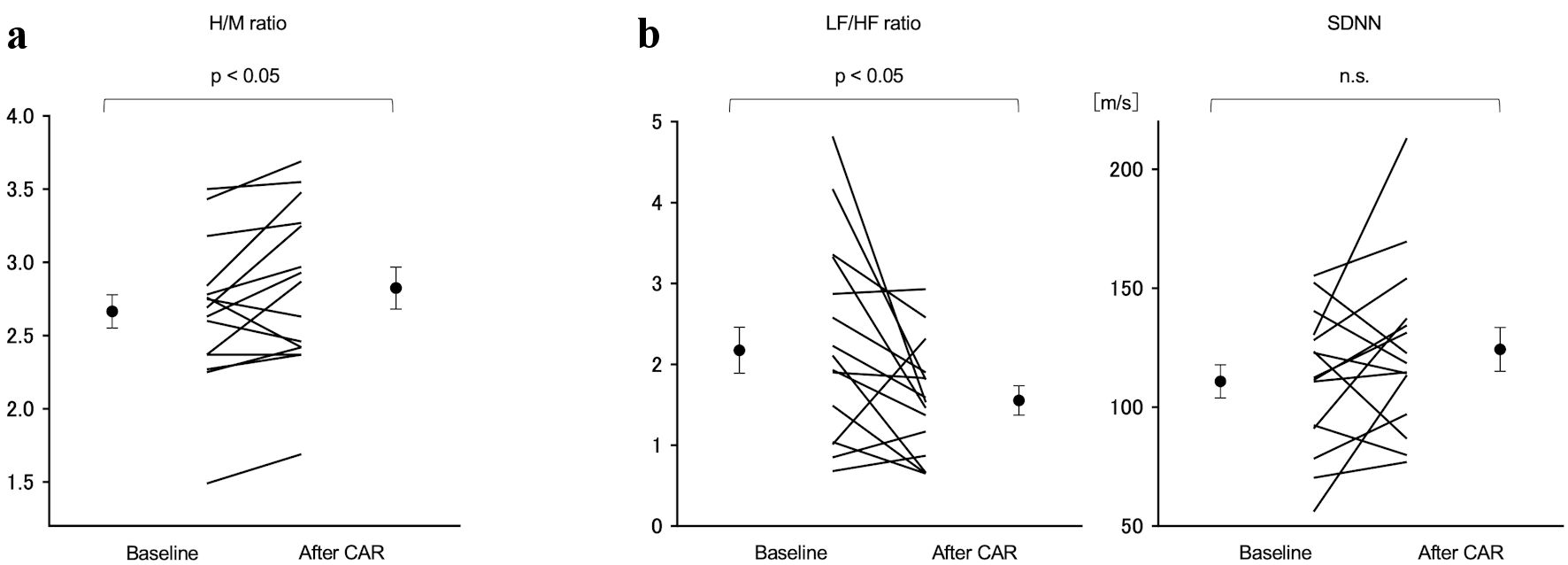
Figure 2. Representative case of improvement in sympathetic function after CAR. A 57-year-old woman with general cardiovascular risk factors, including hypertension and dyslipidemia was not taking beta-blockers. The H/M ratio on 123I-MIBG scintigraphy was calculated by dividing the mean pixel value within the myocardium by the mean pixel value within the mediastinum, using the region of interest (ROI) of the entire heart and the upper mediastinum on the planar image. Compared to pre-CAR, MIBG uptake in the heart was higher than in the upper mediastinum, suggesting decreased sympathetic nerve activity. CAR: carotid artery revascularization; H/M: heart-to-mediastinum; 123I-MIBG: iodine-123-metaiodobezylguanidine; LF: low-frequency; HF: high-frequency; SDNN: standard deviation of the N-N interval.

Figure 3. Comparison of the H/M ratio on the 123I MIBG scintigraphy and LF/HF ratio and SDNN on 24-h Holter ECG pre- and post-CAR. (a) The H/M ratio increased significantly from 2.66 ± 0.48 preoperatively to 2.86 ± 0.56 postoperatively (P < 0.05). (b) The LF/HF ratio decreased significantly from 2.17 ± 1.20 preoperatively to 1.62 ± 0.68 postoperatively (P < 0.04). SDNN showed no change. H/M: heart-to-mediastinum; 123I-MIBG: iodine-123-metaiodobezylguanidine; LF: low-frequency; HF: high-frequency; SDNN: standard deviation of the N-N interval; CAR: carotid artery revascularization.

Figure 4. Comparison of LVEF and E/e’ between pre- and post-CAR. (a) The LVEF decreased significantly from 67.8±7.7% preoperatively to 64.8±7.2% postoperatively (P < 0.05). (b) The E/e’ decreased significantly from 11.7 ± 5.1 preoperatively to 10.1 ± 4.0 postoperatively (P < 0.05). LVEF: left ventricular ejection fraction; CAR: carotid artery revascularization.



